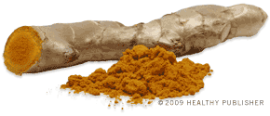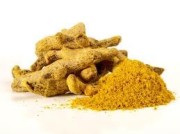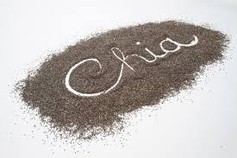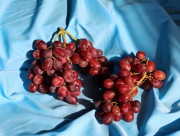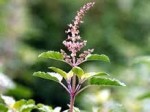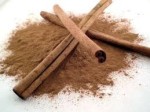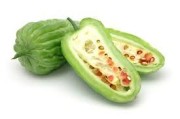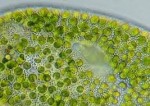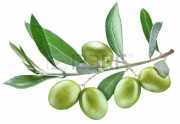And God said, “Behold, I have given you every plant yielding seed that is on the face of all the earth, and every tree with seed in its fruit. You shall have them for food."
Genesis 1:29 (ESV)
And on the banks, on both sides of the river, there will grow all kinds of trees for food. Their leaves will not wither, nor their fruit fail, but they will bear fresh fruit every month, because the water for them flows from the sanctuary. Their fruit will be for food, and their leaves for healing.”
Ezekiel 47:12 (ESV)
Curcumin supplementation is shown to halt the progression of diabetes in pre-diabetics
Curcumin is the yellow-orange pigment and the most important ingredient in turmeric. Curcumin has many clinical applications, particularly as a powerful, yet safe, anti-inflammatory agent.
Curcumin is the most important active ingredient in turmeric, and makes up about 2-6% of the spice. While therapeutic properties of turmeric have been known for centuries, modern science has identified the curcuminoids (phenolic compounds found in turmeric) and provides a scientific basis for many clinical uses of standardized curcumin. (SO IT CAN ONLY BE GOOD FOR ANYONE WHO IS DIABETIC-TH)
The following article is from Natural News Wednesday, September 18, 2013 by: John Phillip
Curcumin, the native Indian spice derived from turmeric has been touted for decades as a powerful tool in the fight against cancer development and progression, Alzheimer's disease and
cardiovascular disorders due to its natural antioxidant and anti-inflammatory properties. The spice compound has recently attained 'superstar' status along with other nutrients including resveratrol,
vitamin D and omega-3 fatty acids in the fight against chronic diseases that plague millions of aging individuals.
A group of researchers publishing in Diabetes Care have found that supplementation with a standardized compound extracted from turmeric may help prevent diabetes in people at high risk.
Diabetes and prediabetes, the precursor stage of the disease, afflicts as many as one-third of the US population, placing as many as 100 million individuals at dramatically increased risk for heart
disease, cancer and dementia as well as early death.
Study finds curcumin halts the deadly progression to diabetes in pre-diabetic individuals
To conduct the study, scientists reviewed a cohort of 237 pre-diabetic participants in Thailand. Prediabetes is defined as a fasting blood glucose reading between 100 and 124 mg/dL, although many
forward-thinking natural practitioners believe the lower reading should be 85 mg/dL. Researchers found that over nine months, a daily dose of curcumin appeared to prevent new cases of diabetes among
people with clinically diagnosed pre-diabetes.
Study participants received a daily regimen of three curcumin capsules containing 240 mg of curcuminoids each twice per day or placebo capsules for nine months. Physical examinations were conducted over the
enrollment period to gather data on body weight, waist circumference, glucose tolerance, insulin resistance, glycated hemoglobin and C-peptide, all biomarkers used to assess the progression of
diabetes.
At the end of the nine month period, 16.4 percent of the study's participants receiving the placebo developed diabetes, with a fasting plasma glucose level above 126 mg/dL, or an oral glucose
tolerance test level of 200 mg/dL or higher at two hours. Among those receiving the curcumin supplemented protocol, no cases of diabetes occurred. Additionally, the researchers determined that the
supplemented group had significantly improved pancreatic beta cell function (beta cells release insulin to control serum blood glucose levels) and decreased levels of insulin resistance.
The study authors concluded "Our study showed that the curcumin extract can effectively prevent the prediabetes population from developing type 2 diabetes mellitus... because of its benefits and
safety, we propose that curcumin extract may be used for an intervention therapy for the prediabetes population." This study used a daily regimen of 730 mg of a standardized curcumin extract to
achieve the results reported. Most health-minded adults will want to supplement with 500 to 1,000 mg of curcumin each day to prevent the damaging health effects of metabolic syndrome and
diabetes.
Sources for this article include:
http://care.diabetesjournals.org/content/early/2012/07/02/dc12-0116
http://www.nlm.nih.gov/medlineplus/news/fullstory_127711.html
http://www.lef.org
Turmeric can help regenerate the liver, groundbreaking new research (YOUR LIVER HEALTH IS CRITICAL FOR OVERCOMING ANY DISEASE BECAUSE IT IS THE QUARTERBACK FOR YOUR IMMUNE SYSTEM, AND "MILK THISTLE PYTOSOME" IS ALSO GREAT FOR THE LIVER, AND CHEAP ON AMAZON-TH)
The following article is from Natural news, Wednesday, October 10, 2012 by: J. D. Heyes
Incredible, groundbreaking new research just published in the Journal of the Medical Association of Thailand found that the primary polyphenol in turmeric - curcumin - is able to repair and even
regenerate the liver tissues in diabetic rats. Researchers at the Srinakharinwirot University in Bangkok administered curcumin to rats afflicted with diabetes and whose livers demonstrated the
characteristic pathology and destruction of tissues and microvasculature. The curcumin was able to trigger a significant reversal of the condition. "Fascinatingly, liver microvasculature in curcumin
treated group developed into regenerate and repair into healthy and normal characteristics," the research team said, in its findings. "These results optimistically demonstrated the potential use of
curcumin as a novel therapeutic agent in liver pathology of diabetic rats."
The Thai research is just the latest - albeit most promising to date - research showing a treatment link between curcumin and both forms of diabetes, Type I and Type II. Earlier research reveals
similar findings Researchers, who published their results in the journal Diabetes Care in July, said they discovered that over nine months, a daily dose of curcumin - a compound in curry spice -
appeared to prevent new cases of diabetes among people with so-called pre-diabetes, or abnormally high blood sugar levels that could eventually progress into full-blown Type II diabetes, which is
also linked to obesity.
That study, which was also Thai-based, followed 240 adults with pre-diabetes who were randomly assigned to either take curcumin capsules or a placebo that looked identical but contained no active
ingredient, Reuters reported. After nine months, 19 of the 116 placebo patients had developed Type II diabetes, compared to none of the 119 patients who took the curcumin. The researchers, led by Dr.
Somlak Chuengsamarn of Srinakharinwirot University in Nakornnayok, Thailand, said their findings were an endorsement. "Our study showed that the curcumin extract can effectively prevent the
prediabetes population from developing type 2 diabetes mellitus," wrote the research team. "Although we found that the results were quite remarkable, a longer trial may be required to see if the
curcumin-treated prediabetes population will eventually develop type 2 diabetes mellitus."
"Because of its benefits and safety, we propose that curcumin extract may be used for an intervention therapy for the prediabetes population," the team wrote. One thing experts agree on is that the
concentration of curcumin is not the same in each extract or capsule. In the July Thai study, participants took six capsules a day containing 250 mg each of "curcuminoids."
"Last year, the testing company ConsumerLab.com found that 20 percent of curcumin and turmeric supplements it tested failed the company's quality review. And the cost of getting the amount of
curcumin used in this study would range from 39 cents to $1.50 per day, depending on the supplement used," Reuters reported.
As for the study's results, Constance Brown-Riggs, a certified diabetes educator and spokesperson for the Academy of Nutrition and Dietetics, said more research was needed but that what had been
discovered thus far "is compelling, and the good news is there seemed to be minimal adverse effects." Other health benefits are thought to be linked to this compound, which is one of the most
clinically studied ever. For example, "scientists agree that curcumin may have anti-inflammatory properties and may act as an antioxidant," says Discovery Health. "Other research is looking into
the use of curcumin and turmeric in treating many medical conditions, including Alzheimer's disease, high cholesterol and osteoarthritis." Even if you don't eat a lot of food from certain cultures
that use curry, you have likely eaten something with curcumin. If you've had a hot dog with mustard, you have: curcumin gives mustard its distinctive tangy flavor and yellow color.
(The above info is why I highly recommend and take twice daily the "Supercritical Tumeric" from Tattva's Herbs. It is 'only' $30 for a bottle of 120 IF you buy six bottles at a time including shipping. Pretty expensive but, like krill oil, a wonderful supplement for your health!!!-TH)
Studies show that chia seeds can treat diabetes, boost energy and more
Article fron natural news by Michael Ravensthorpe
Sunday, December 15, 2013
Chia is a species of flowering plant that bears oval-shaped, multicolored seeds. These seeds, which have a neutral taste and crunchy texture, have been cultivated for centuries as a survival food
in their native Mexico and Guatemala. Chia seeds had only just begun to enjoy recognition in the United States, however, when the eccentric Californian gadget company, Joseph Enterprises, began to
market them in the 1980s as "Chia Pets," which are terracotta figurines that sprouted chia.
Aztec warriors treasured chia seeds for their medicinal properties, and many of these alleged properties are now being confirmed by contemporary studies. Below is a list of the health benefits
attributed to chia seeds and the research that reinforces them.
Rich in essential fatty acids
One serving (2 ounces) of chia seeds contains approximately 11 grams of fat. Of these, 1 gram is saturated fat, while the remainder is comprised of essential polyunsaturated and monounsaturated fats, including omega-3 and omega-6 fatty acids. In fact, according to a 2005 study published in theNutrition Research journal, chia seeds are the greatest plant-based sources of alpha-linolenic acid (ALA). ALA is an essential omega-3 fatty acid that has been known to prevent cancer, lower the risk of cardiovascular diseases, reduce cortisol levels and much more. Moreover, chia seeds and other foods that contain optimum omega-3/omega-6 balances are known to improve brain function, since our brains are built from the same fats.
Excellent source of protein and energy
According to chia expert Dr. Wayne Coates, chia seeds are comprised of at least 20 percent protein. This protein is high-quality; the amino acid score for chia seeds is 91 out of a possible 100, which dwarfs the scores of other protein-packed seeds such as flax seed. This near-perfect amino acid profile makes chia seeds an excellent 'complete' protein source for vegetarians, as well as a potent energy source for bodybuilders and athletes. In fact, according to The Magic of Chia author James Scheer, chia was once called the "Indian Running Food" due to its significant energy-boosting properties.
Help treat diabetes
Several studies have confirmed the long-held belief that chia seeds can help treat diabetes. One January 2009 study published in the British Journal of Nutrition, for instance, found
that chia could normalize insulin resistance in diabetic rats while reducing the fat and cholesterol in their blood. These
findings reinforce the results of an earlier 2007 study for the Diabetes Care journal, which concluded that chia improved "major and emerging cardiovascular risk factors in type 2 diabetes"
in 20 patients.
These impressive results are often attributed to the fact that chia seeds form a gel when ingested, which slows the
breakdown of carbohydrates, allowing the digestive system to process sugar in a more gradual and stable manner.
Packed with nutrients and minerals
According to the information supplied by NutritionData, 1 ounce (28 grams) of dried chia seeds contains 18 percent of our RDI of calcium, 27 percent of our RDI of phosphorus, 30 percent of our RDI
of magnesium and varying quantities of zinc, copper and potassium. 1 ounce of chia seeds also contains a whopping 42 percent of our RDI of dietary fiber, making them an effective natural cure for
constipation.
Chia seeds are easy to find online and in health food stores, and they boast a long shelf life. Though they are usually eaten "as is," often as a snack in-between meals, some people like to add them
to their morning smoothies or breakfast cereals
Dangers of high blood sugar can be alleviated with cinnamon, chromium and bitter melon
Article from Natural news, Friday, March 29, 2013 by: Talya Dagan
Blood sugar causes degenerative disease. Not only diabetes is a concern, but also high blood sugar affects the eyes, kidneys, brain, the heart, and also speeds the aging process. Sugar creates inflammation in the body, and burns the cells by inflammatory oxidation. This inflammatory process is called glycation. It damages the organs, blood vessel and cells. Excess sugar in the blood can make a person feel tired and fatigued and turn into fat. This causes weight gain and fat deposits in the stomach area. To reduce blood sugar, first stop eating any refined sugar or white sugar. Read packaging for hidden sugars in processed foods such as corn sweeteners.
Symptoms of low or high blood sugar imbalance: Low blood sugar can cause a jittery or nervous sensation. Some people feel shaky and lightheaded when their blood sugar is low. They can crave sweets or coffee as a pick-me-up. Even after eating, you can experience hungry and sugar cravings if your blood sugar is low. High blood sugar can make a person feel tired, especially after eating. It can also cause a person to feel irritated by little things, or tired throughout the day. Nutrients to reduce high blood sugar:
- Chromium Chromium removes glucose from your blood. When you eat sugar, your body utilizes the supply of chromium, so it's important to add this nutrient to your diet. Chromium levels also decrease with aging by as much as 40 percent. The most biologically active form of chromium is chromium polynicotinate. This following info is taken from another article):
The micromineral chromium, a major player in the regulation of blood sugar, has been depleted from American soils for over 100 years. The result: a population 90 percent deficient in the mineral with uncontrollable carb cravings. Taking 800-1,000 micrograms per day of chromium stabilizes both high and low blood sugar, promotes fat burning and improves cholesterol levels.
- Vanadium Vanadium is a trace mineral that helps stabilize blood sugar. Vanadium in the form of vanadyl sulfate is easily absorbed. It allows the sugar in your blood to go to the muscles where it can be burned more easily.
- Cinnamon Cinnamon challenges the body to respond better to insulin. This is a great benefit to individuals who are insulin resistant or have diabetes or other blood sugar issues. Cinnamon contains methylhydroxy chalone (MHCP), a polymer that balances the blood sugar and increases the body's energy stores. One study showed that cinnamon reduced blood sugar by 29 percent while also reducing cholesterol.
- Gymnema sylvestre Gymnema sylvestre is an herb used in ayurvedic medicine in India. It destroys sugar, which is also the meaning of the plant's name. This herb prevents the sugar in foods you eat from turning into glucose too quickly. It slows the conversion of sugar to blood glucose. By doing so, the blood sugar remains more stable.
- Bitter melon Momordica charantia, or bitter melon is a tropical fruit with blood sugar lowering properties, demonstrated in over 100 research studies. It also has been shown to reduce the appetite. The ingredient in the fruit called lectin along with four other chemical compounds, lower the concentration of sugar in the blood. Bitter melon stimulates an enzyme in the body that mimics the method by which exercise utilizes sugar in the blood. This means that by eating bitter melon, the sugar in the blood is moved from the blood to the muscles and is then converted to energy, instead of to fat.
Reservatrol shown to treat, cure diabetes
Article from natural news, Monday, September 24, 2012 by:Jonathan Benson, staff writer
A recent study presented at the National Meeting & Exposition of the American Chemical Society (ACS) has found that resveratrol, a nutrient compound found in grape skins, blueberries, and red
wine, can improve motor coordination and help prevent falls among the elderly. And in presenting the findings, researchers dubbed resveratrol a "miracle molecule," presumably because of its many
other known health benefits.
Reservatrol shown to treat, cure diabetes
In another amazing study recently published in the journal Nutrition Research, researchers out of India found that resveratrol also helps fight and even cure type-2 diabetes by normalizing hemoglobin
levels in the blood. Compared to diabetics receiving only oral hypoglycemic drugs, diabetics taking 250 milligrams (mg) daily of a specific brand of resveratrol for three months experienced
dramatically improved blood sugar levels.
These same trial patients reportedly experienced both lowered blood pressure levels and improved blood cholesterol levels as a result of taking resveratrol, which confirms what numerous other studies
in years past have found concerning the nutrient's incredible ability to fight chronic inflammation; improve cognitive function; promote longevity; boost heart health; and target disease-causing free
radicals, among other benefits. (http://www.naturalnews.com/resveratrol.html)
"Oral supplementation of resveratrol is thus found to be effective in improving glycemic control and may possibly provide a potential adjuvant for the treatment and management of diabetes," wrote the authors of the Indian study in their review. (http://www.naturalproductsinsider.com)
Apple cider vinegar shows promise against diabetes complications
http://www.naturalnews.com/042009_apple_cider_vinegar_diabetes_complications_health_benefits.html
Overcome diabetes with therapeutic herbs
Article from Natural news, Monday, January 14, 2013 by: Jonathan Benson,
If you or someone you know suffers from either diabetes or pre-diabetes, it might come as a surprise to learn that a life of endless insulin shots and blood glucose drugs is not your only treatment
option. If you are serious about truly overcoming your diabetic condition, there are actually a number of all-natural herbal remedies available that possess proven curative benefits. Here are some of
your best options:
1) Ginseng. Known for its ability to help modulate blood sugar levels, ginseng, and American ginseng in particular, is a powerful weapon in the fight against diabetes. A 2000 study out of the University of Toronto, for instance, found that a single three-gram dose of ginseng extract helps significantly reduce the blood sugar spike that typically occurs following a high-carbohydrate meal. Specifically for diabetics, taking ginseng either with or before a meal can help produce such results quickly and safely.
A follow-up study conducted in 2001 found that doses of ginseng even as low as one gram were still enough to provide virtually the same therapeutic benefits. Based on the results of the two studies, researchers recommended that diabetic patients take a minimum one-gram dose of ginseng 40 minutes prior to mealtime to normalize their blood sugar levels naturally. When combined with a healthy, low-carbohydrate and low-sugar diet, ginseng can even help some diabetics fully recover from their condition.
2) Holy basil leaf. Also known as tulsi, holy basil leaf has long been used throughout South Asia as a folk medicine. Today, it has been shown to be a powerful regulator of both blood sugar and blood lipid levels, and ultimately as an effective treatment for diabetes. According to a placebo-controlled study published in the Journal of Clinical Pharmacy and Therapeutics, holy basil leaf taken in moderate amounts can bring about a roughly 20 percent decrease in blood sugar levels.
According to Mother Earth Living, the traditional way to administer holy basil is in the form of steeped tea. If you have a tea ball or your own teabags, simply add one teaspoon of the dried leaves
to one cup of water, and drink three cups of the brew daily. You can also purchase holy basil leaf in capsule or gelcap form as a dietary supplement if this is more convenient.
3) Cinnamon. Cinnamon is a much more medicinal spice than most people probably think it is, particularly as a treatment for erratic blood pressure levels and diabetes. Like ginseng, cinnamon helps to modulate blood sugar levels throughout the day, particularly in between meals when blood sugar levels tend to spike and drop, which is common for diabetics. As it turns out, cinnamon taken in therapeutic doses helps to lower fasting blood glucose levels and boost insulin response, effectively correcting the very symptoms associated with diabetes.
"Not only does cinnamon activate essential enzymes in the body, thus stimulating the receptors in the cells so they will respond more efficiently to insulin, but it also inhibits the enzymes responsible for deactivating ... causing insulin resistance," explains David W. Tanton in the book Antidepressants, Antipsychotics, and Stimulants: Dangerous Drugs on Trial.
4) Bitter melon. Another traditional folk remedy, bitter melon, or Momordica charantia, has long been utilized by ancient cultures as a treatment for diabetes and blood sugar issues. The cucumber-like fruit contains several powerful compounds that exhibit anti-diabetic activities, including charantin, a hypoglycemic agent that has actually been shown to be more effective, and far safer, than the diabetes drug tolbutamide (Tol-Tab).
"Momordica also contains an insulin-like polypeptide, polypeptide-P, which lowers blood sugar levels when injected subcutaneously into type 1 diabetic patients," explains the site Holistic Online about bitter melon. "The oral administration of 50-60 ml (milliliters) of the juice has shown good results in clinical trials."
5) Garlic and onions. Interestingly enough, garlic and onions are both powerful blood sugar-lowering foods as well. These two common foods contain disease-fighting, sulfur-containing nutrients such as allyl propyl disulphide (APDS) and diallyl disulphide oxide (allicin) that help lower blood glucose levels and increase the amount of free insulin in the body.
Both intravenously and orally, onion extract has been shown scientifically not only to improve the metabolism of carbohydrates in the liver, but also to correct the improper release and use of insulin in the liver and elsewhere throughout the body. Similarly, garlic, which is also a member of the onion family, helps to normalize blood pressure and cholesterol levels, and reduce blood glucose levels without causing harmful side effects.
"OPE (onion peel extract) might improve glucose response and insulin resistance associated with type 2 diabetes by alleviating metabolic dysregulation of free fatty acids, suppressing oxidative
stress, up-regulating glucose uptake at peripheral tissues, and/or down-regulating inflammatory gene expression in liver," concluded a 2011 study on onions published in the journal Nutrition &
Metabolism.
Chlorella may improve insulin sensitivity in type 2 diabetes patients
Article from Natural news, Sunday, November 03, 2013 by PF Louis
There have been studies under the radar of public awareness or mainstream media disclosure demonstrating chlorella's ability to improve diabetic symptoms. It's certain that very few MDs know of these studies. It seems that the wonders of this single-cell microalgae superfood continue to surface. Chlorella has demonstrated several immune system benefits, detoxification benefits, liver health enhancement, and even anticancer activities. Now it looks like diabetes 2 and prediabetic or metabolic disorder individuals can address those issues directly with chlorella while enjoying all the other benefits this centuries-old, fresh water, green microalgae can offer.
Three studies for chlorella's affect on insulin and blood sugar issues. Insulin is a hormone produced by the pancreas to metabolize nutrients, especially glucose, primarily for energy needs but
for other functions as well. Diabetes 1 sufferers have insufficient pancreatic functions of insulin, while type 2 diabetics are "insulin resistant." Their pancreas is pumping insulin, but cells are
not taking it in for metabolic energy conversion. Just before the type 2 diabetes designation comes a prediabetic situation commonly called metabolic syndrome or metabolic disorder syndrome. This
malady is characterized by obesity, hypertension, high blood sugar, high liver triglyceride counts and early signs of some insulin resistance.
All of these situations can be improved with chlorella consumption.
A study from Seoul, South Korea, published in a 2009 edition of Nutrition Research and Practice used two types of rats. One type had diabetes type 2 and the other type was normal. Both types
were subdivided into three groups according to the percentage of Chlorella vulgaris in their diets: 0 percent, 1 percent and 5 percent. After measuring several markers in all sets of rats,
the researchers decided that their study provided enough positive information about chlorella's ability to reverse high blood sugar, or hyperglycemia, without pushing the pancreas to produce more
insulin. Instead, chlorella was able to
create a hypoglycemic effect that countered the insulin resistance-induced hyperglycemia. [3] Another Korean study with Chlorella vulgaris and rats (chlorella is popular in East Asia) took
two sets of rats separated by diets. One group was fed a normal diet, while the other was fed a high fat diet.
Then those groups were subdivided further into no chlorella, 5 percent chlorella and 10 percent chlorella in their diets for nine weeks. "In conclusion, 10% Chlorella intake was more effective for
blood glucose regulation than 5% Chlorella intake in rats fed a high fat diet. Chlorella intake may prevent insulin resistance in Wistar rats fed a high fat diet."
Well good for the rats. But what about we humans? Here's a study that promotes human use. This study was conducted in Taiwan. Again, rats were used, but this time some rats were fed fructose-rich
chow and then fed chlorella. Perhaps this was to mimic the high HFCS processed food diet that has taken over most industrialized regions. Even with too much fructose, the rats fed chlorella fared
well.
Their conclusion: "The obtained results suggest that oral administration of Chlorella has the ability to improve insulin sensitivity, which may be used as an adjuvant therapy for patients with insulin
resistance." [Emphasis added] These studies demonstrate the potential for using chlorella to prevent or diminish insulin resistance and high blood glucose issues, even diabetes type 2, while
enjoying chlorella's detoxification and immune-boosting dynamics.
Remember, chlorella is a food, not a synthetically derived supplement. Anywhere from 3 to 5 grams intake daily is recommended for generally improving health, while more may be added for intensely
therapeutic purposes.
Is Olive leaf nature's way to diabetes treatment?
Written By: Case Admas, naturopath
Tuesday, October 1st 2013
Researchers from the University of Auckland have determined that olive leaf extract has the ability to decrease insulin sensitivity and increase the production of insulin by the pancreas. In this randomized, double-blinded and placebo-controlled clinical study, the researchers divided 46 overweight men into two groups. They gave one group olive leaf extract (standardized to oleuropein and hydroxytyrosol) and the other group a placebo for twelve weeks. The placebo and olive leaf extracts were both given in capsules and their identity completed masked.
Then after a six-week washout period, the researchers switched the groups, giving the placebo group the extract and the olive extract group the placebo. The researchers found that the olive leaf extract lowered insulin resistance by an average of 15% and increased the productivity of the pancreas' beta cells – which produce insulin - by 28%. Insulin sensitivity was measured using a glucose tolerance test, which measures glucose and insulin levels in the blood every thirty minutes. pancreatic beta cell function was measured using the Matsuda method of glucose/insulin curve measurements.
The researchers concluded: "Supplementation with olive leaf polyphenols for 12 weeks significantly improved insulin sensitivity and pancreatic β-cell secretory capacity in overweight middle-aged men at risk of developing the metabolic syndrome." While the research shows the ability of olive leaf to treat type 2 diabetes, this effect of olive leaf extract upon the pancreas' beta cells means that olive leaf may well be able to treat or partly ameliorate type 1 diabetes outcomes – related to an insufficiency and relative destruction among the beta cells that depletes their ability to produce enough insulin.
In their analysis of this study together with other research on olive leaf surmised that the effects upon a person with type 2 diabetes would likely be more pronounced. This concept is confirmed by a number of studies of conventional medications that showed effects upon diabetics are greater than on non-diabetic individuals. The scientists, in their comparison to conventional drugs for insulin sensitivity, noted that the olive leaf extract's effects of increasing beta cell production at the same time as decreasing insulin sensitivity was unique, because the conventional medications typically produce the effect of increasing beta cell activity but not decreasing insulin sensitivity. They stated:
"Hence, compared to these drugs that only improve insulin secretion, olive leaf extract improves both insulin sensitivity and pancreatic β-cell secretory capacity. Remarkably, the observed effects of olive leaf extract supplementation in our study population is comparable to common diabetic therapeutics (particularly metformin)..."
The ability of olive leaf extract to treat type 2 diabetes was confirmed in a study last year from Israeli medical researchers. In this study, 79 type 2-diabetic patients were given 500 milligrams daily olive leaf extract or a placebo for 14 weeks. The olive leaf treatment group had significantly lower levels of HbA1c (glycosylated hemoglobin) and lower fasting plasma insulin levels.
Olives have been a central part of the famous Mediterranean Diet for thousands of years, and olive leaf has been used medicinally for those with blood sugar issues at least for centuries. There is no surprise that the Meditterean diet is known for its ability to prevent and even reverse metabolic disease.
Garlic may be an effective treatment for diabetes
Article from Natural news, Sunday, November 17, 2013 by: L.J. Devon, Staff Writer
Various cultures around the world already understand that herbs such as ginger, cinnamon, garlic and turmeric can effectively treat conditions like diabetes. According to research from the biomedical science department at the King Faisal University in Saudi Arabia, garlic may be the most powerful of them all for treating diabetes.
Meanwhile, the American Diabetes Association believes there is no evidence that herbs like cinnamon or garlic effectively treat diabetes. The highly acknowledged American Diabetes Association
states that they are "leading the fight to stop diabetes and its deadly consequences." This mission statement sounds nice, but it is really just a pretty front. It's all talk with no real solution.
It's a vague statement of false hope. The American Diabetes Association is really just keeping people in the dark about diabetes. Here's why: Prior to
their lofty mission statement, they establish that "There is no clear evidence of benefit from vitamin or mineral supplements for people with diabetes who do not have underlying vitamin or mineral
deficiencies. Nor is there evidence to support the use of cinnamon or other herbs or supplements for the treatment of diabetes."
They couldn't be further from the truth.
As they claim to "fund research to prevent, cure and manage diabetes," people are left wondering what works and where the money's going. Meanwhile, there is plentiful evidence available showing that
herbal, holistic treatments reverse diabetic conditions. In fact, a holistic lifestyle change is the testimony of many natural health advocates. Still, people with diabetes are left in the dark, not
knowing where to start. Now is the time for well-known organizations like the American Diabetes Association to confess that clear evidence does exist and that herbs like cinnamon and garlic can
effectively treat diabetes.
The studies are there. The mechanisms of these powerful natural substances are alive and real. It's clear that herbs are continually downplayed by known organizations as if these organizations are
puppets of a higher order, silenced by some kind of drug profiting industry. It's like there's a witch hunt against natural, healing remedies. Medical professionals aren't even educated about the
medicinal benefits of something as simple as garlic. (Think of the healthcare savings that would ensue if people grew and used garlic instead of running to the doctor for an antibiotic.) Real,
affordable healthcare begins with empowered individuals.
Garlic effectively treats diabetes and oxidative stress
From the Biomedical Science Department at the King Faisal University in Al-Hofuf, Saudi Arabia, comes a comprehensive study on three herbal spices: garlic, ginger and turmeric. Studying the
hypolipidemic, antioxidant and hypoglycemic properties of the spices, the researchers compared the modulating effect that these spices have on metabolic syndrome and oxidative stress of diabetic rats.
Injected with streptozotocin nicotinamide, the rats in the study were induced with diabetes.
In the study, the diabetic rats were divided into four groups and examined for 28 days. One group was given 200 mg/kg body weight of garlic bulb. The other groups were given equal amounts of ginger
root, tumeric root or a combination of the three herbs. The mixtures were administered in distilled water. At the end of the four weeks, all three herbs alleviated metabolic
syndromes of hyperglycemia and dyslipidemia by an average of 80 to 97 percent! The production of insulin increased up to 37 percent in the diabetic rats. Similarly, the rats' antioxidant defense
systems were boosted, by a 52 percent increase!
Likewise, oxidative stress as seen in lipid peroxidation decreased by 60 - 97 percent in the rats' cells. In the end, the most effective supplement was garlic and then the three-herb mixture. These supplements modulated the diabetes 10 to 23 percent more effectively than the other mixtures. In conclusion, garlic, ginger and turmeric are a great herbal combination for alleviating the risk of metabolic syndrome and oxidative stress, and garlic bulb is the most powerful tool in this fight, according to this study.
More important information:
Diabetes can be cured: health begins in the gut
Curing diabetes: refining the diet and lifestyle



